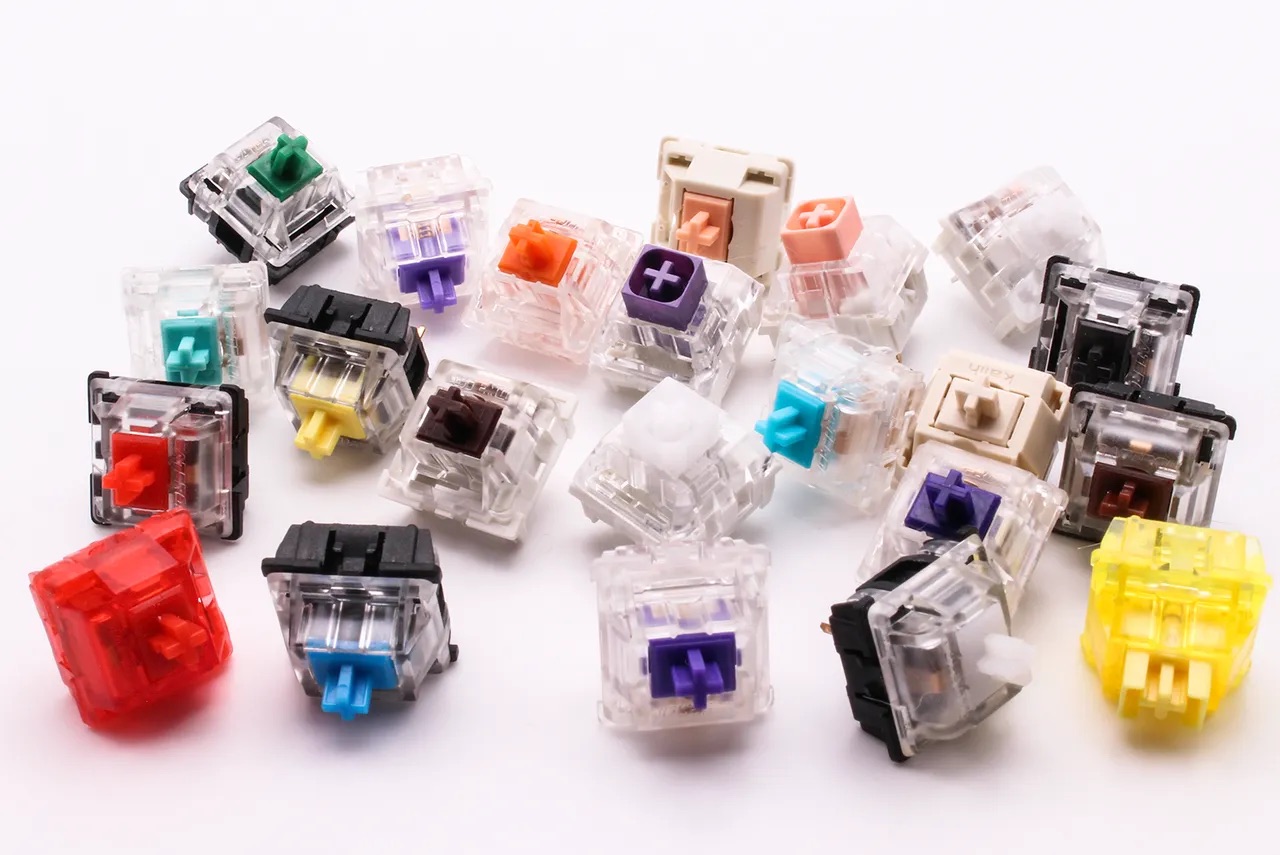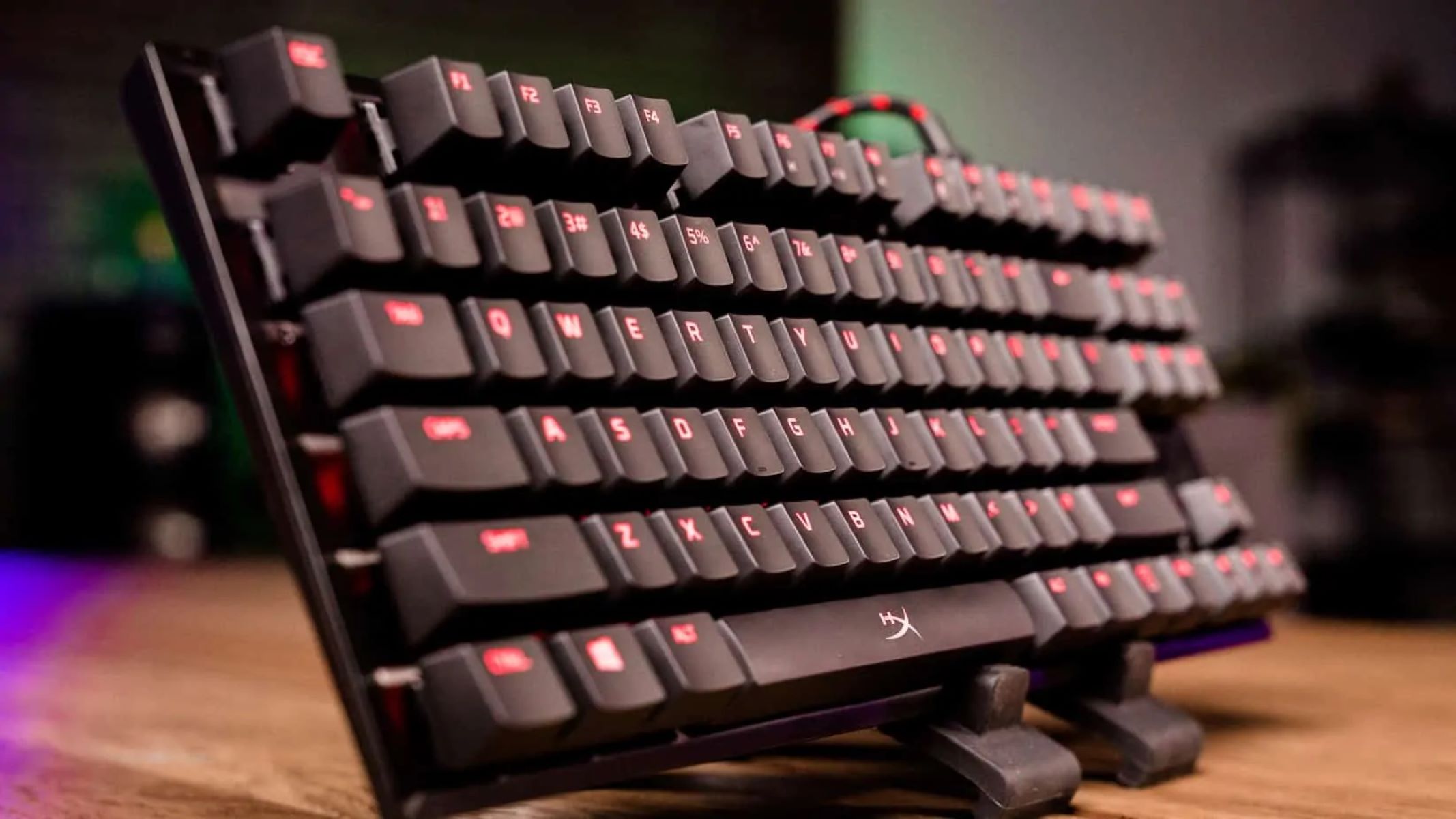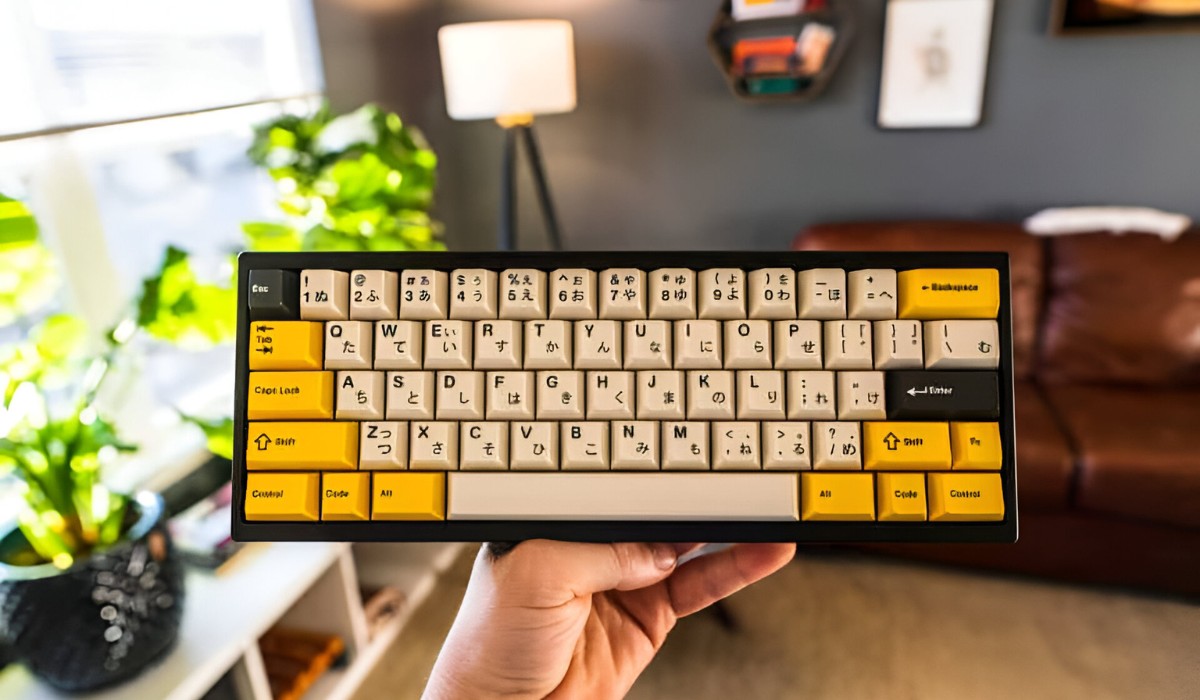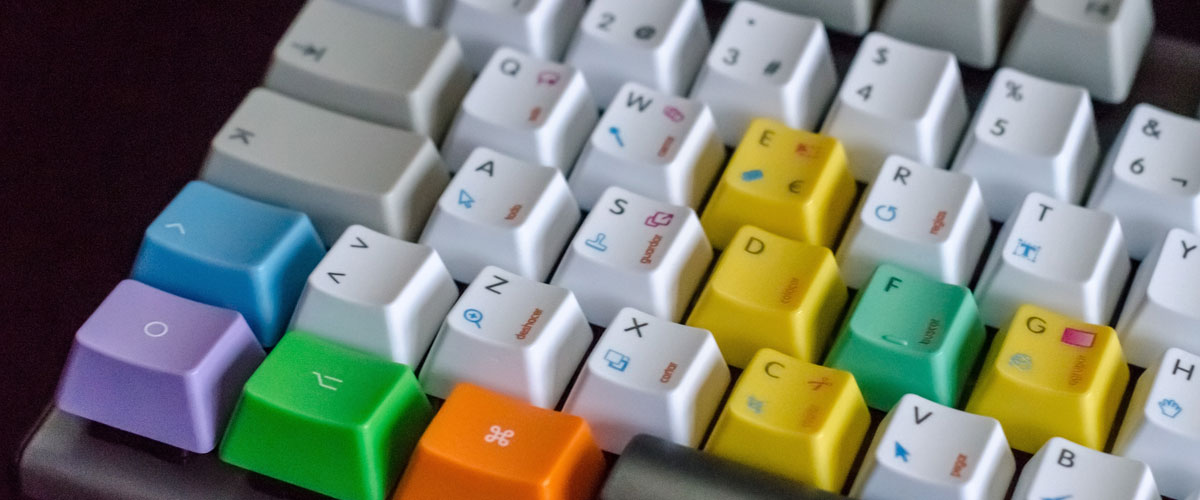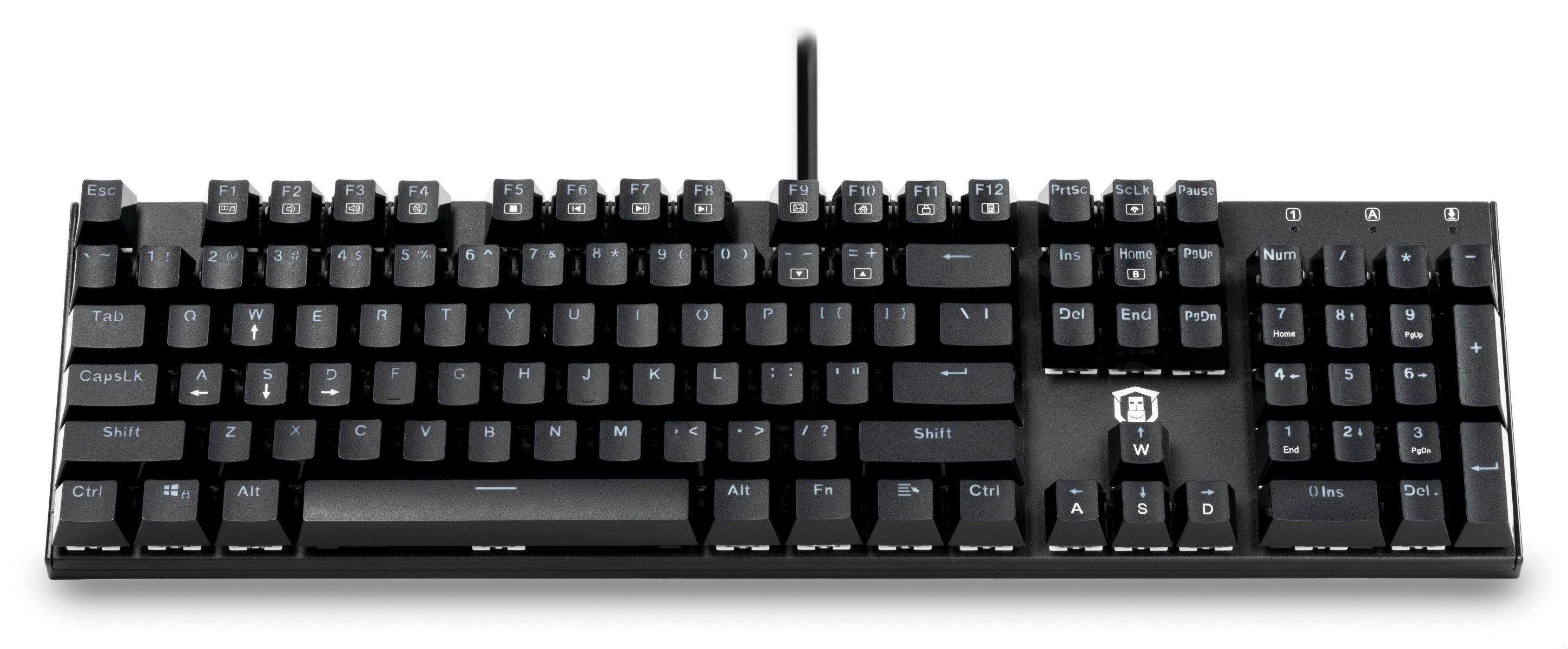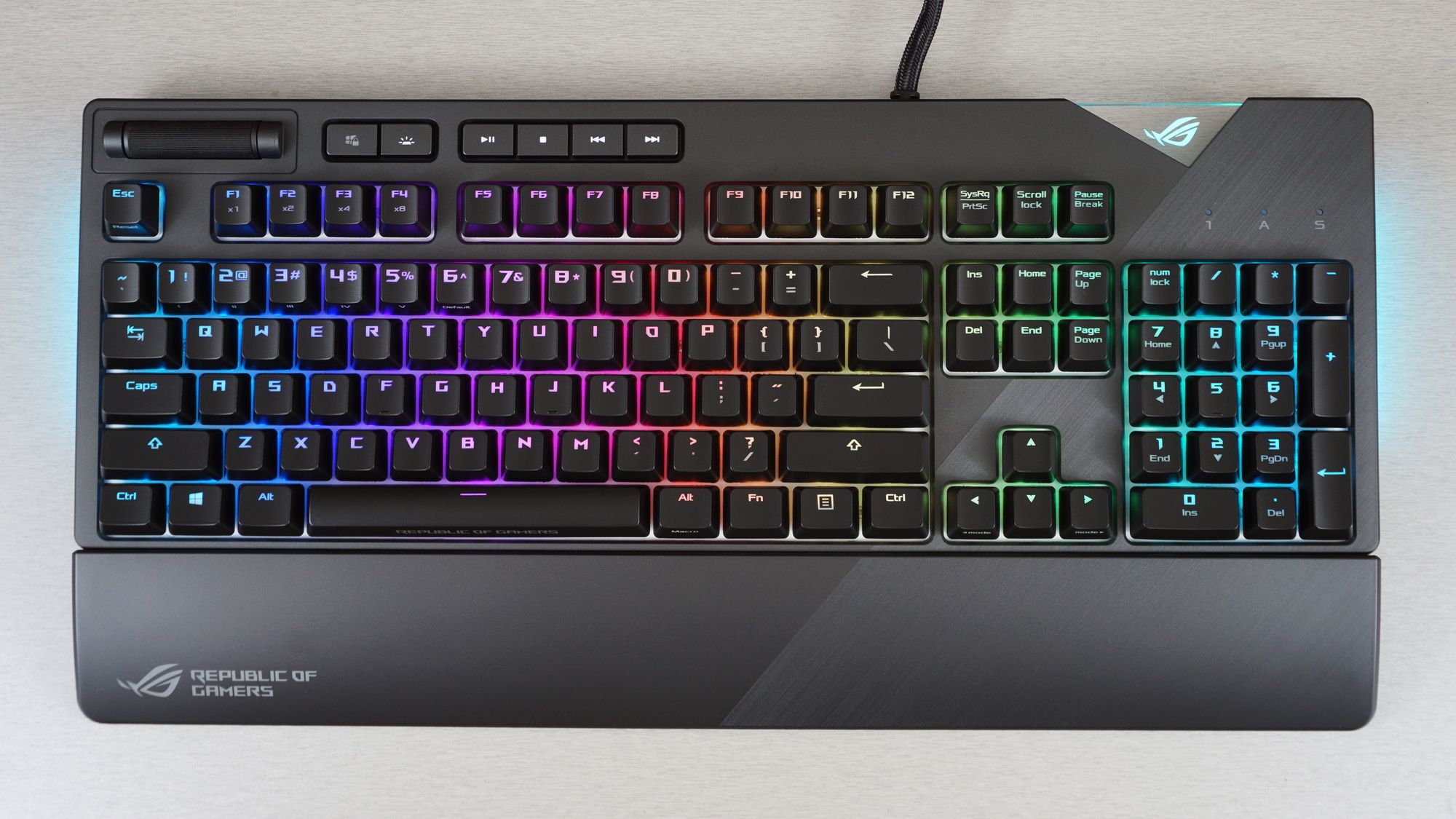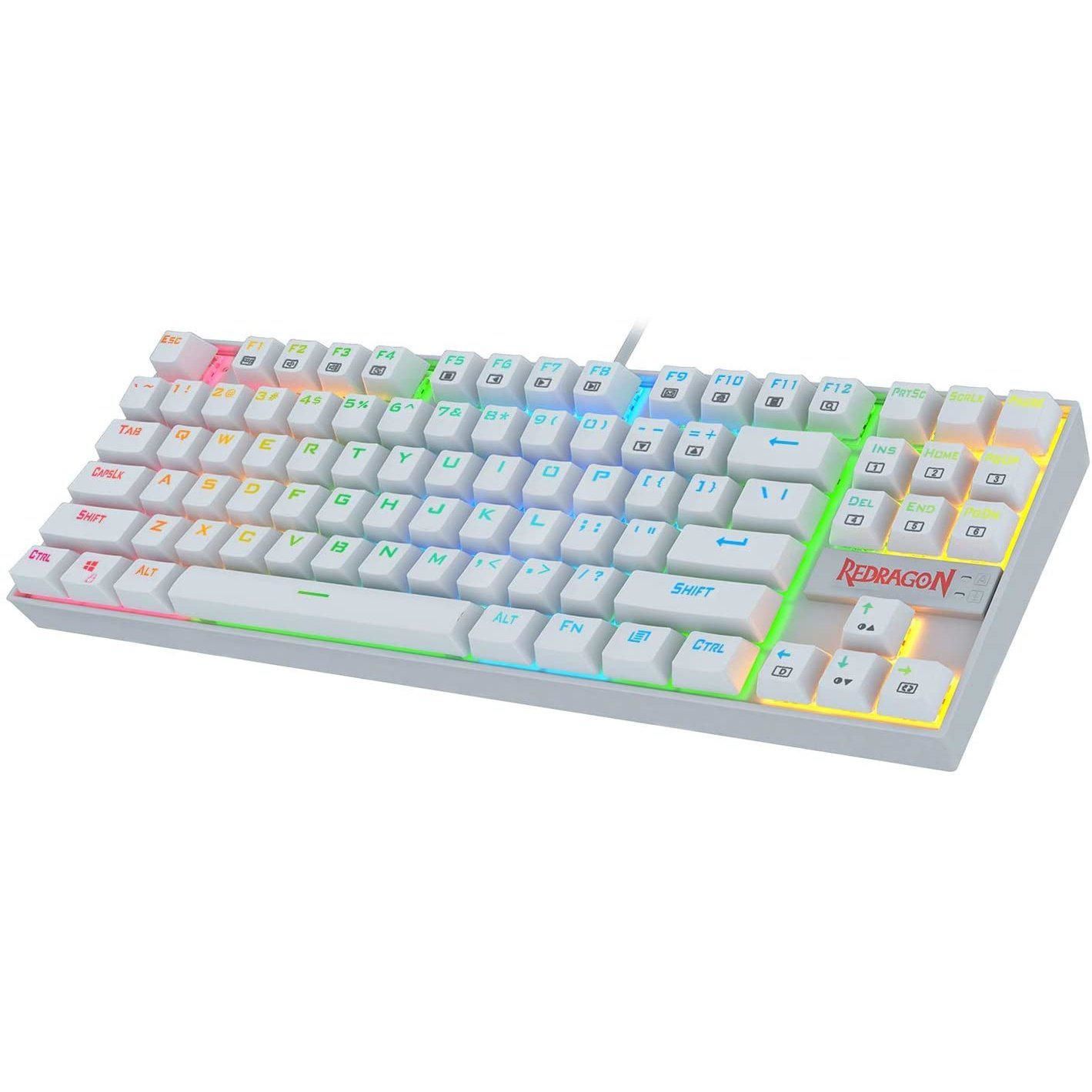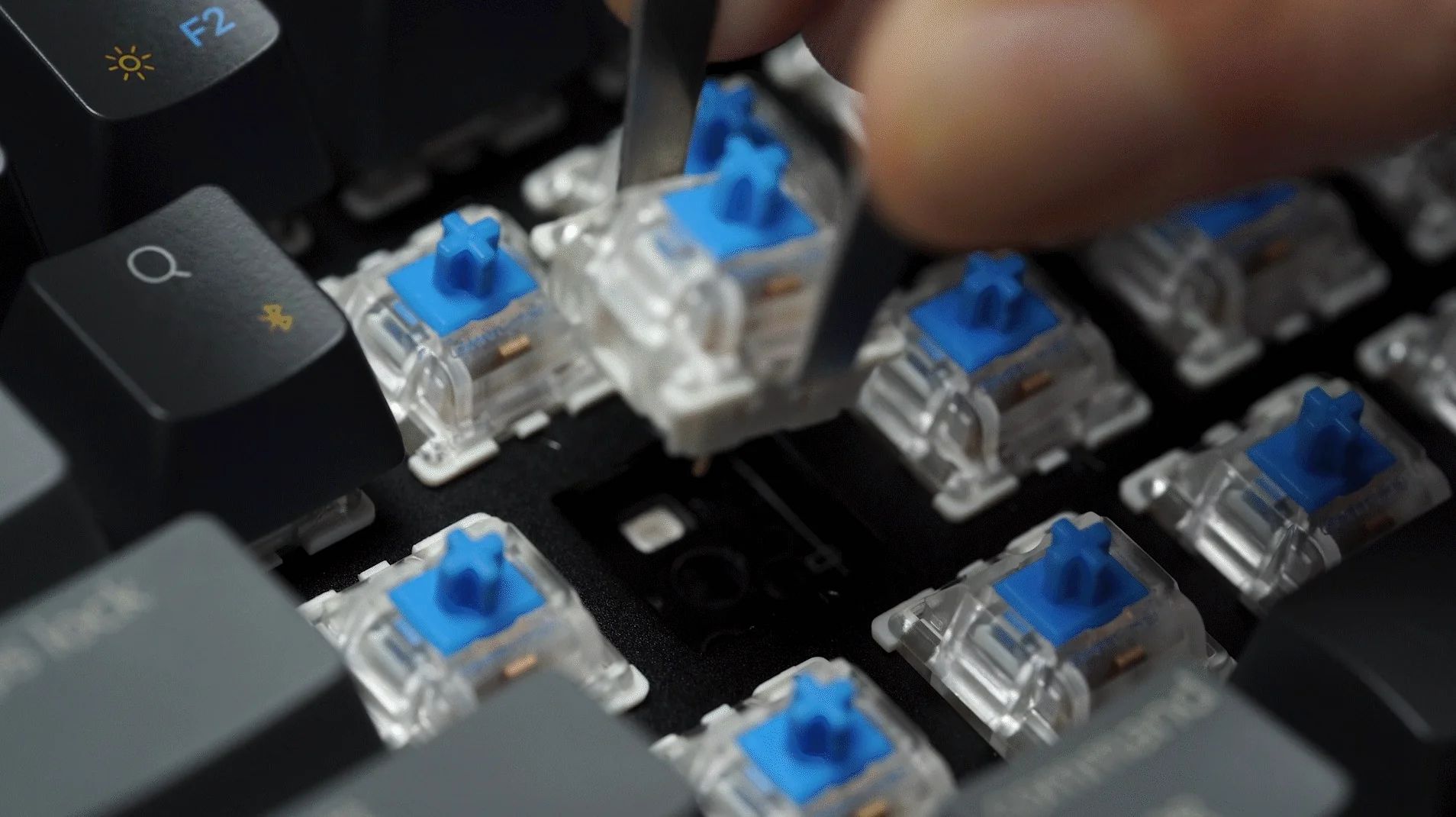Introduction
Keyboards are an essential tool for any PC gamer, and the type of keyboard switch used can significantly impact the gaming experience. The keyboard switch, which lies beneath each key and registers the keystroke, comes in various types, each offering distinct tactile feedback and performance characteristics. Understanding the differences between these keyboard switch types is crucial for gamers looking to optimize their gaming setup.
When it comes to gaming keyboards, two primary categories of switches dominate the market: membrane and mechanical. Membrane keyboards, characterized by a single rubber dome under each key, offer a quieter and more affordable option. On the other hand, mechanical keyboards, known for their individual mechanical switches under each key, provide a tactile and audible typing experience, making them a popular choice among gamers and typists alike.
As the gaming community continues to grow, the demand for high-performance gaming peripherals, including keyboards, has surged. With the myriad of options available, it’s important for gamers to have a comprehensive understanding of the different keyboard switch types, their unique attributes, and how they can impact gaming performance. In this article, we will delve into the intricacies of membrane and mechanical keyboards, explore the various types of mechanical switches, and shed light on the benefits and drawbacks of each, empowering gamers to make informed decisions when selecting their ideal gaming keyboard.
Membrane Keyboards
Membrane keyboards are a popular choice for casual users and those on a budget. They feature a simple yet effective design, with each key sitting atop a rubber dome that houses a conductive trace. When a key is pressed, the rubber dome collapses, making contact with the circuit and registering the keystroke. This design results in a relatively quiet typing experience, making membrane keyboards suitable for shared spaces or environments where noise is a concern.
While membrane keyboards are often associated with affordability and quiet operation, they may not provide the tactile feedback and responsiveness desired by avid gamers. The rubber dome design can lead to a mushy or spongy feel, which may not be conducive to rapid key presses and precise input required in gaming scenarios. Additionally, the lack of individual switches for each key can result in a less consistent typing experience, as the pressure required to actuate keys may vary across the keyboard.
One of the key advantages of membrane keyboards is their cost-effectiveness. These keyboards are generally more budget-friendly than their mechanical counterparts, making them an attractive option for those seeking a functional yet economical input device. Furthermore, the membrane design lends itself to a sleek and slim profile, contributing to the overall aesthetics of the keyboard.
However, for gamers who prioritize tactile feedback, key rollover, and durability, mechanical keyboards often emerge as the preferred choice. The limitations of membrane keyboards in meeting the demands of intense gaming sessions have led many enthusiasts to opt for mechanical switches, which offer a more robust and responsive typing experience.
While membrane keyboards have their place in the market, particularly for everyday computing tasks and general use, the distinct advantages offered by mechanical keyboards have solidified their position as the go-to option for serious gamers and enthusiasts seeking superior performance and tactile precision.
Mechanical Keyboards
Mechanical keyboards have garnered a dedicated following among gamers and professionals due to their exceptional tactile feedback, durability, and customizable features. Unlike membrane keyboards, which rely on rubber domes for actuation, mechanical keyboards employ individual mechanical switches under each key. These switches are available in a variety of types, each offering distinct tactile and audible feedback, enabling users to tailor their typing experience to their preferences.
One of the key advantages of mechanical keyboards is their responsiveness. The actuation force required to register a keystroke is consistent across the keyboard, allowing for precise and rapid input during gaming sessions. This attribute, known as key rollover, is particularly crucial in gaming scenarios where split-second reactions can make all the difference.
Furthermore, mechanical keyboards are renowned for their durability. The individual switches are designed to withstand tens of millions of keystrokes, far surpassing the lifespan of membrane keyboards. This longevity makes mechanical keyboards a sound investment for users seeking a reliable and long-lasting input device.
Another notable feature of mechanical keyboards is their customizability. Enthusiasts can choose from a variety of switch types, including linear, tactile, and clicky switches, each offering unique characteristics to suit different preferences. Additionally, many mechanical keyboards support the installation of custom keycaps, allowing users to personalize the look and feel of their keyboard to reflect their individual style.
While mechanical keyboards excel in providing a tactile and responsive typing experience, they are often associated with a louder typing sound compared to membrane keyboards. This audible feedback, particularly prevalent in clicky switches, may be a point of consideration for users in shared or noise-sensitive environments.
Despite the higher price point associated with mechanical keyboards, their superior performance, durability, and customizability have solidified their status as the preferred choice for gamers and professionals seeking an elevated typing experience. The diverse range of mechanical switch types further enhances the appeal of these keyboards, allowing users to fine-tune their input devices to align with their specific preferences and gaming requirements.
Types of Mechanical Switches
Mechanical switches are available in various types, each offering unique characteristics that cater to different user preferences. Understanding the distinctions between these switch types is crucial for gamers and keyboard enthusiasts looking to tailor their typing experience to their specific needs.
Linear Switches
Linear switches are favored for their smooth and consistent keystrokes, making them ideal for gaming scenarios that demand rapid and precise input. These switches lack a tactile bump or audible click, allowing for uninterrupted keystrokes and enabling users to actuate keys with minimal resistance. The linear nature of these switches makes them well-suited for gaming tasks that require swift and seamless key presses, contributing to a fluid and responsive gaming experience.
Tactile Switches
Tactile switches are characterized by a noticeable bump in the keystroke, providing tactile feedback to users upon actuation. This tactile sensation, often accompanied by a quiet or subtle click, offers users a discernible indication that the key press has been registered. The tactile feedback of these switches appeals to users who prioritize a responsive and tactile typing experience, making them well-suited for both gaming and typing tasks where precision and feedback are valued.
Clicky Switches
Clicky switches, as the name suggests, produce an audible click sound upon actuation, in addition to providing tactile feedback. This distinctive clicking sound, coupled with the tactile bump, delivers a satisfying and audible confirmation of each keystroke. While the audible feedback of clicky switches may not be suitable for noise-sensitive environments, they are favored by users who appreciate the auditory and tactile reassurance of key actuation. The audible click can also enhance the typing experience for some users, adding a sense of rhythm and satisfaction to each keystroke.
Each type of mechanical switch offers a unique blend of tactile and auditory feedback, enabling users to select the switch type that best complements their typing style and preferences. Whether prioritizing a smooth and uninterrupted keystroke, a discernible tactile bump, or an audible click with each press, the diverse range of mechanical switch types empowers users to customize their keyboard to align with their specific gaming and typing requirements.
Linear Switches
Linear switches are a popular choice among gamers and typists seeking a consistent and smooth keystroke experience. Unlike tactile or clicky switches, linear switches lack a tactile bump or audible click during actuation, offering a seamless and uninterrupted keystroke from start to finish. This linear and consistent feel makes them well-suited for gaming scenarios that demand rapid and precise input, allowing users to execute keystrokes with minimal resistance and a consistent actuation force.
One of the key advantages of linear switches is their suitability for gaming tasks that require swift and precise key presses. The absence of a tactile bump or audible click allows for a fluid and uninterrupted keystroke, enabling gamers to execute rapid commands with minimal interference. This attribute is particularly valuable in fast-paced gaming environments where split-second reactions and precise input can make a significant difference in gameplay performance.
Furthermore, the linear nature of these switches contributes to a smooth and consistent typing experience, making them well-suited for users who engage in extended typing sessions. The absence of a tactile bump or audible click reduces the physical impact of each keystroke, potentially minimizing finger fatigue and allowing for sustained comfort during prolonged typing sessions.
While linear switches excel in providing a smooth and consistent keystroke experience, some users may find the absence of tactile feedback less engaging compared to tactile or clicky switches. The lack of a discernible bump or audible click may result in a less pronounced tactile sensation, which can be a point of consideration for users who prioritize tactile feedback in their typing experience.
Overall, linear switches offer a compelling option for users seeking a seamless and consistent keystroke experience, particularly in gaming scenarios that demand rapid and precise input. The absence of a tactile bump or audible click, coupled with the smooth and linear actuation, makes them an ideal choice for gamers and typists who value a consistent and uninterrupted typing experience, empowering them to execute commands and keystrokes with precision and fluidity.
Tactile Switches
Tactile switches are revered for their distinctive tactile feedback, providing users with a discernible bump and a subtle confirmation upon key actuation. This tactile sensation, absent in linear switches, offers users a tangible indication that the key press has been registered, contributing to a responsive and engaging typing experience. The tactile feedback of these switches appeals to users who prioritize a tactile and responsive typing experience, making them well-suited for both gaming and typing tasks where precision and feedback are valued.
One of the key advantages of tactile switches is the pronounced tactile bump that occurs during actuation. This tactile feedback provides users with a tangible indication of when the key press has been registered, allowing for enhanced precision and feedback during typing and gaming scenarios. The presence of this tactile bump can aid users in avoiding accidental keystrokes, as the noticeable feedback serves as a clear indication of successful key actuation.
Furthermore, the tactile feedback of these switches can contribute to a more engaging and satisfying typing experience for users. The discernible bump, often accompanied by a quiet or subtle click, adds a layer of physical feedback to each keystroke, enhancing the overall typing experience. This tactile reassurance can be particularly beneficial for users who appreciate the tactile and auditory feedback of key actuation, contributing to a more immersive and responsive typing environment.
While tactile switches offer enhanced tactile feedback compared to linear switches, some users may find the tactile bump less conducive to rapid and uninterrupted key presses. The presence of the tactile bump, while beneficial for feedback and precision, introduces a slight resistance during actuation, which can impact the fluidity of keystrokes in fast-paced gaming scenarios.
Overall, tactile switches provide a balanced blend of tactile feedback and audible confirmation, making them a popular choice for users who prioritize precision, feedback, and engagement in their typing and gaming experiences. The discernible tactile bump and subtle click contribute to a responsive and immersive typing environment, empowering users to execute commands and keystrokes with enhanced precision and tactile reassurance.
Clicky Switches
Clicky switches are distinguished by their audible click sound and tactile feedback, offering users a satisfying and distinctive typing experience. Upon actuation, these switches produce an audible click, accompanied by a tactile bump, providing users with both auditory and tactile reassurance of key registration. The combination of audible and tactile feedback makes clicky switches a compelling choice for users seeking an engaging and responsive typing experience.
One of the key advantages of clicky switches is the audible click sound that occurs during key actuation. This distinctive clicking sound serves as an auditory confirmation of successful key registration, adding a satisfying and rhythmic element to each keystroke. The audible feedback can enhance the typing experience for some users, providing a sense of reassurance and engagement with each key press.
Furthermore, the tactile bump present in clicky switches offers users a discernible indication of key actuation. The tactile feedback, coupled with the audible click, contributes to an engaging and responsive typing environment, allowing users to execute keystrokes with enhanced precision and feedback. This tactile and auditory reassurance can be particularly beneficial for users who value a distinctive and immersive typing experience.
While clicky switches offer a satisfying audible and tactile typing experience, the audible click sound may not be suitable for noise-sensitive environments or shared spaces. The distinctive clicking sound, while appealing to some users, may be disruptive in quiet settings, potentially impacting the user’s surroundings. Additionally, the tactile bump and audible click introduce a degree of resistance during actuation, which can influence the speed and fluidity of keystrokes in fast-paced gaming scenarios.
Overall, clicky switches provide a unique blend of audible and tactile feedback, making them a preferred choice for users who appreciate the distinctive clicking sound and tactile reassurance in their typing and gaming experiences. The audible click and tactile bump contribute to a satisfying and engaging typing environment, empowering users to execute commands and keystrokes with enhanced precision and a distinct auditory rhythm.
Conclusion
As the gaming and typing landscape continues to evolve, the choice of keyboard switch type plays a pivotal role in shaping the user experience. From the affordable and quiet operation of membrane keyboards to the tactile precision and customization options offered by mechanical keyboards, users are presented with a diverse array of options to suit their specific needs and preferences.
For casual users and those seeking a budget-friendly option, membrane keyboards offer a practical and cost-effective solution. Their quiet operation and slim profile make them suitable for everyday computing tasks and shared environments. However, for gamers and enthusiasts who prioritize tactile feedback, key rollover, and durability, mechanical keyboards emerge as the preferred choice, providing a robust and responsive typing experience that enhances gaming performance and overall user satisfaction.
Within the realm of mechanical keyboards, the availability of various switch types, including linear, tactile, and clicky switches, empowers users to tailor their typing experience to their individual preferences. Linear switches deliver a smooth and consistent keystroke, making them ideal for gaming scenarios that demand rapid and precise input. Tactile switches offer a discernible bump and subtle click, providing users with enhanced tactile feedback and precision. Clicky switches, characterized by their audible click sound and tactile bump, deliver a distinctive and engaging typing experience, appealing to users who value auditory and tactile reassurance.
Ultimately, the selection of a keyboard switch type is a personal decision that hinges on the user’s specific requirements and preferences. Whether seeking a quiet and economical solution for everyday use or a tactile and responsive typing experience for gaming and professional tasks, the diverse range of keyboard switch types ensures that users can find the perfect fit for their unique needs. By understanding the nuances of membrane and mechanical keyboards, as well as the distinct characteristics of various mechanical switch types, users are empowered to make informed decisions that enhance their overall typing and gaming experiences.







